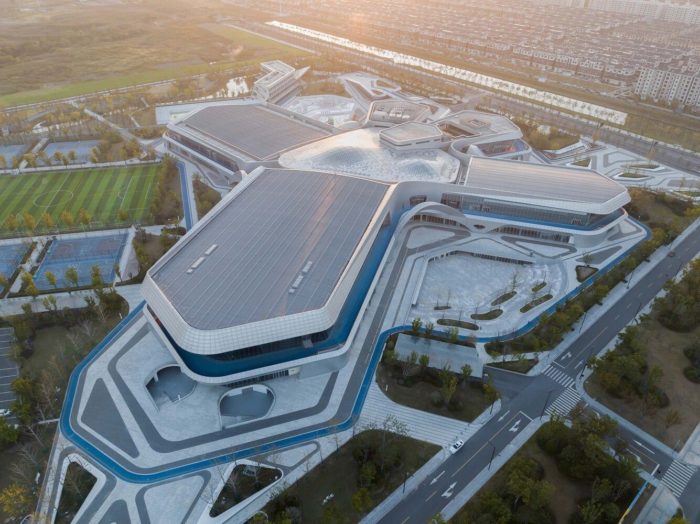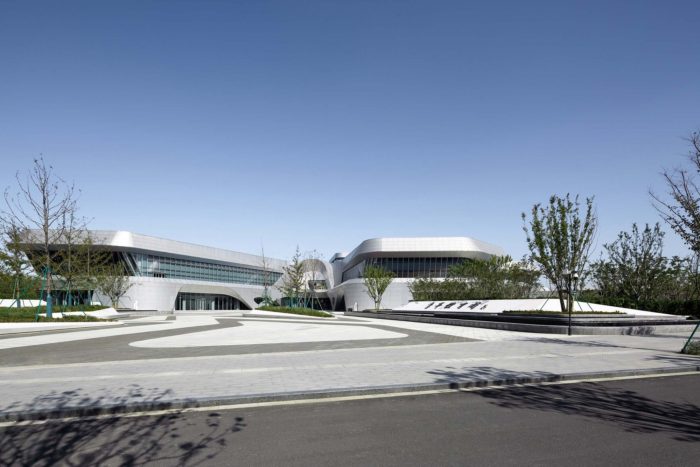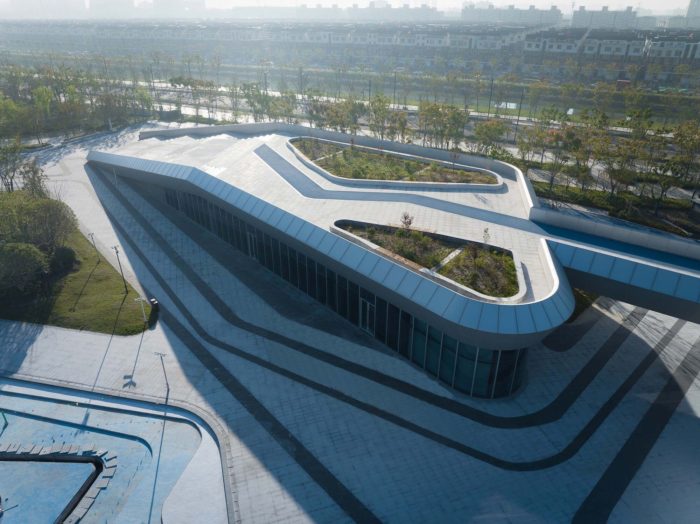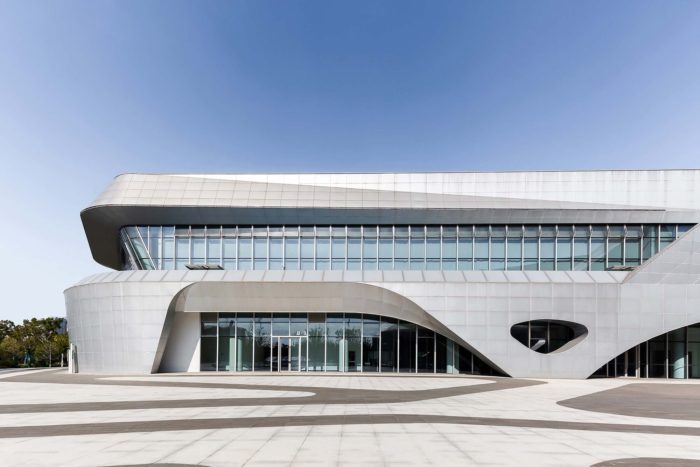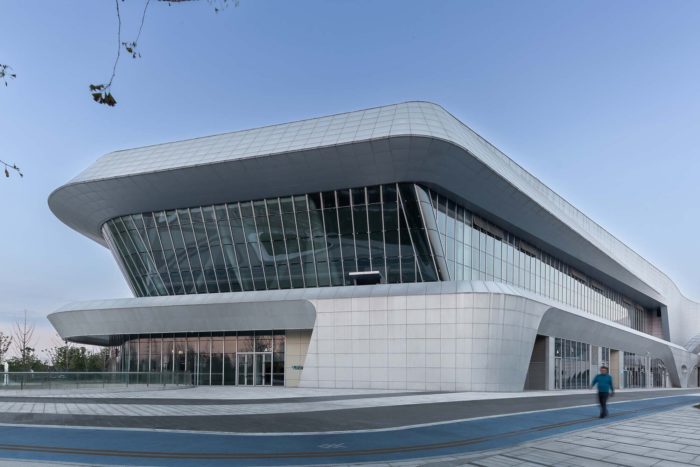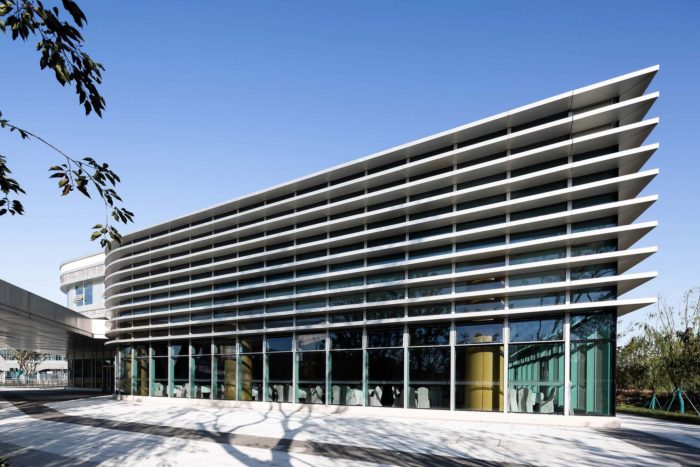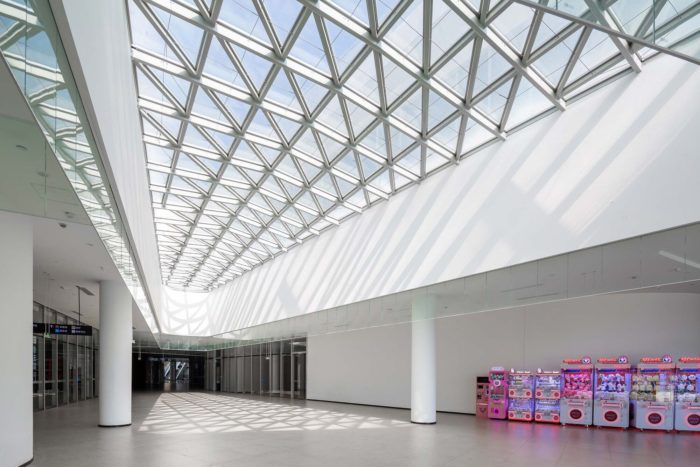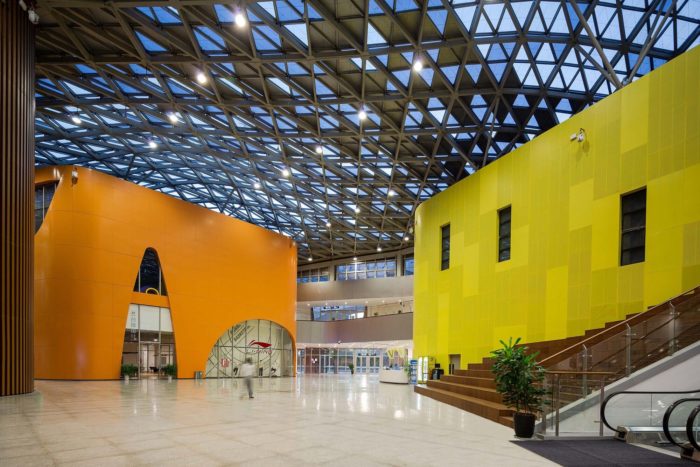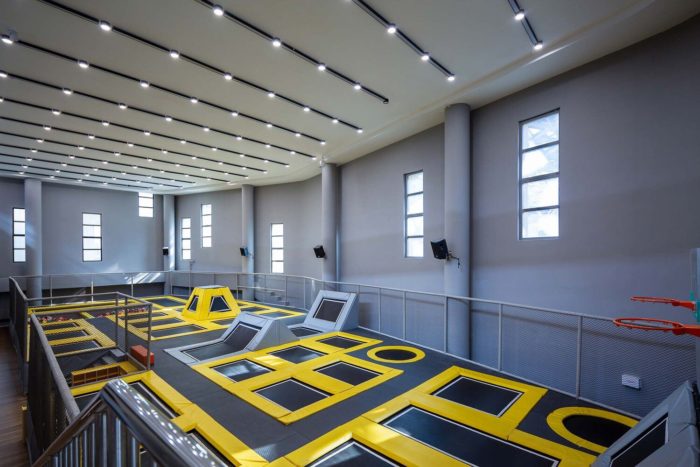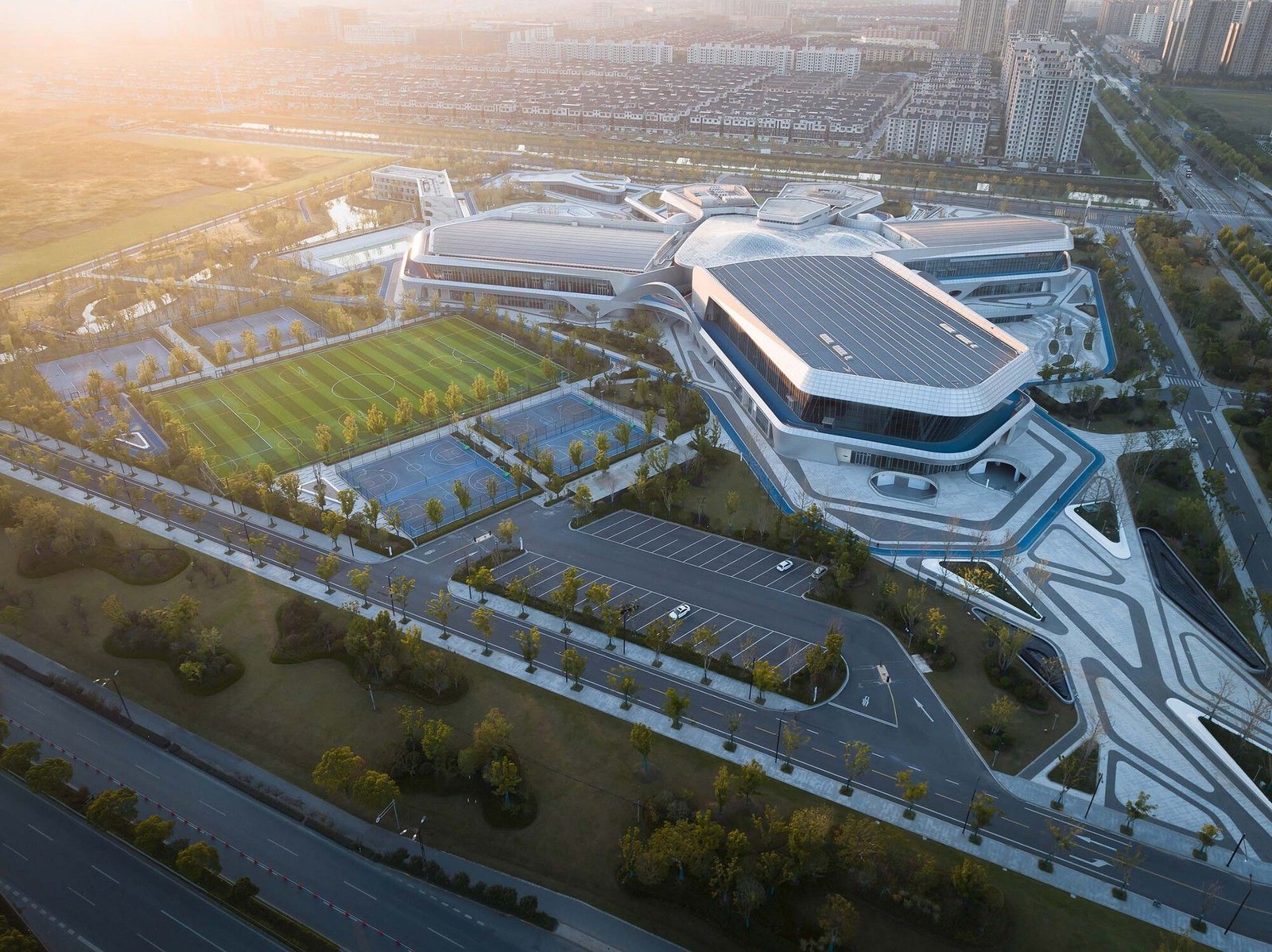
Tongxiang National Fitness Center and Li Ning Sports Park | PT Architecture Design
In the context of urban design, the chosen location for the Tongxiang National Fitness Center is Wuzhen Avenue, strategically connecting the heart of Tongxiang City with Wuzhen Town. The primary objective is to enhance the cultural, sports, and tourism characteristics of this urban axis. The initial design concept revolves around seamlessly incorporating the building volume of the fitness center and the surrounding sports park into a unified entity. By utilizing the Tongxiang National Fitness Center as the focal point, the intention is to generate more communal and accessible spaces for interaction, giving rise to a novel cultural and sports hub that harmoniously blends sports, culture, nature, and the urban environment.
Tongxiang National Fitness Center’s Design Concept
This endeavor aspires to transform the area into a city living room, a space where citizens can relish and promote a forward-looking, health-conscious lifestyle. Regarding functional arrangements, the Tongxiang National Fitness Center introduces the concept of “mass sports,” focusing on accommodating competitive sports, mass sports, and leisure sports in the design. The Tongxiang National Fitness Center ‘s primary structure encompasses a multifunctional competition hall, a swimming pool, and a national fitness hall. Notably, the multifunctional competition hall creatively blends spaces for periodic competitive sports with areas for daily mass activities.
The central space of the Tongxiang National Fitness Center, spanning 5,000 square meters, serves as a versatile area suitable for both everyday use and competitive events. This space maximizes flexibility by employing an optimized proportion and a layout that combines fixed and movable seating, making it adaptable for multifunctional sports and cultural events. In performance mode, it can accommodate up to 3,000 spectators, meeting the specifications of a second-class gymnasium during competitions.
In our design approach, we have expanded the role of the Tongxiang National Fitness Center beyond the confines of traditional competitive sports. We have introduced new sports activities and extended sports-related functions, including rock climbing, trampolining, rehabilitation services, children’s quality training, and esports. As for spatial organization, the Project incorporates the concept of a “sports mall” and implements a radial layout known as “one center with multiple cores” to seamlessly integrate all these elements into a cohesive whole.
The “One Center” designates a sunlit, communal atrium, while “multiple cores” pertains to the diverse array of individual venues within this space. The shared atrium serves the dual purpose of streamlining pedestrian circulation and fostering extensive interaction between the various activities, encompassing physical and visual aspects. Within the atrium, each of the different activity spaces is imbued with distinct characteristics.
The gym area features an energetic and dynamic texture, accentuated by expansive curved windows facilitating interaction with the atrium. The trampoline pavilion incorporates perforated metal plates with varying opening sizes, symbolizing the diverse communication options available. Positioned at the atrium’s center, the design includes a sizable staircase connecting the first and second floors, offering citizens a space to sit, relax, and even host small-scale performances.
In every space, there is an inherent dynamic of observation and participation, where individuals take on the roles of both performers and spectators. Effective space design should inspire people to be more engaged and receptive, fostering self-expression and healthy forms of recreation and encouraging open interaction, not solely with friends but also with strangers. In an age characterized by a digitally interconnected society, the physical divide between individuals has grown, making real-world, face-to-face interaction all the more valuable than its virtual counterpart.
The 2.3 km running track on the ground floor seamlessly blends with the natural surroundings and serves as a concealed fire escape route. It links the outdoor sports area, water play zone, wet landscape area, and square area. Additionally, the 1.2 km-long second-level running path establishes an organic connection between the Park and the Tongxiang National Fitness Center’s rooftop garden. This not only enhances the running experience but also promotes interaction between individuals within and outside the building. Furthermore, it cleverly addresses the evacuation needs of second-level occupants.
Starting from the urban environment, transitioning into the park, and eventually reaching the Tongxiang National Fitness Center, a distinctive sports and cultural leisure experience pathway takes shape. Our vision is that this project will evolve into a fresh, open focal point in Tongxiang, thereby establishing a public space network that caters to the daily needs of residents. The fitness center serves as the thread that weaves together sports, recreation, leisure, and the natural surroundings into a harmonious whole.
Project Info
Architects: PT Architecture Design
Area: 96400 m²
Year: 2021
Photographs: Guiming Chen
Lead Architect: Xudong Shi
Design Team: Xiongtao Zhan, Hongxing Qi, Unjia Jiang, Chunfei Bai, Kaibin Huang, Gongxiang Xu, Jing Lin, Wei Sun, Hong Wang, Ming Fang, Zujie Mao, Qing Yu, Di Wu
Landscape Design: The Architectural Design &. Research Institute of Zhejiang University Co., Ltd
Client: Tongxiang Zhendong New District Construction Investment Co., Ltd.
City: Jia Xing
Country: China

